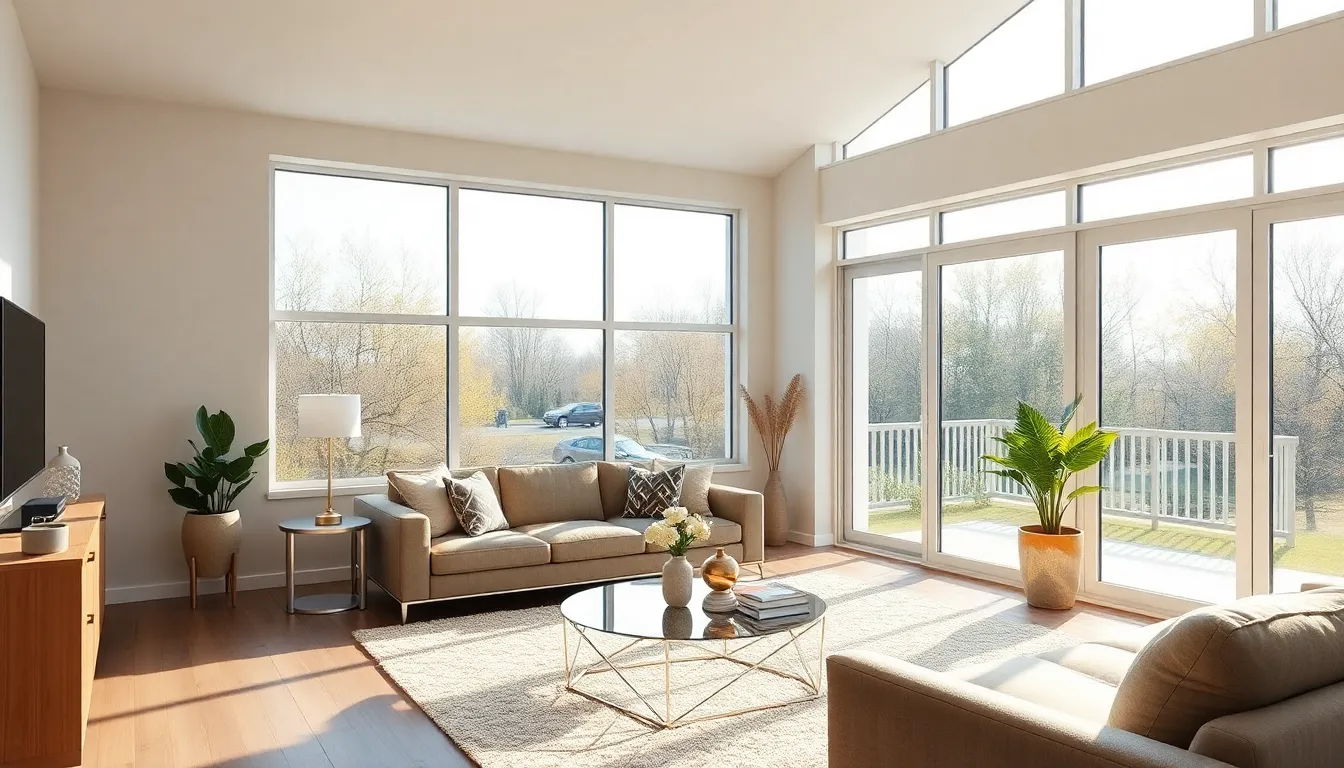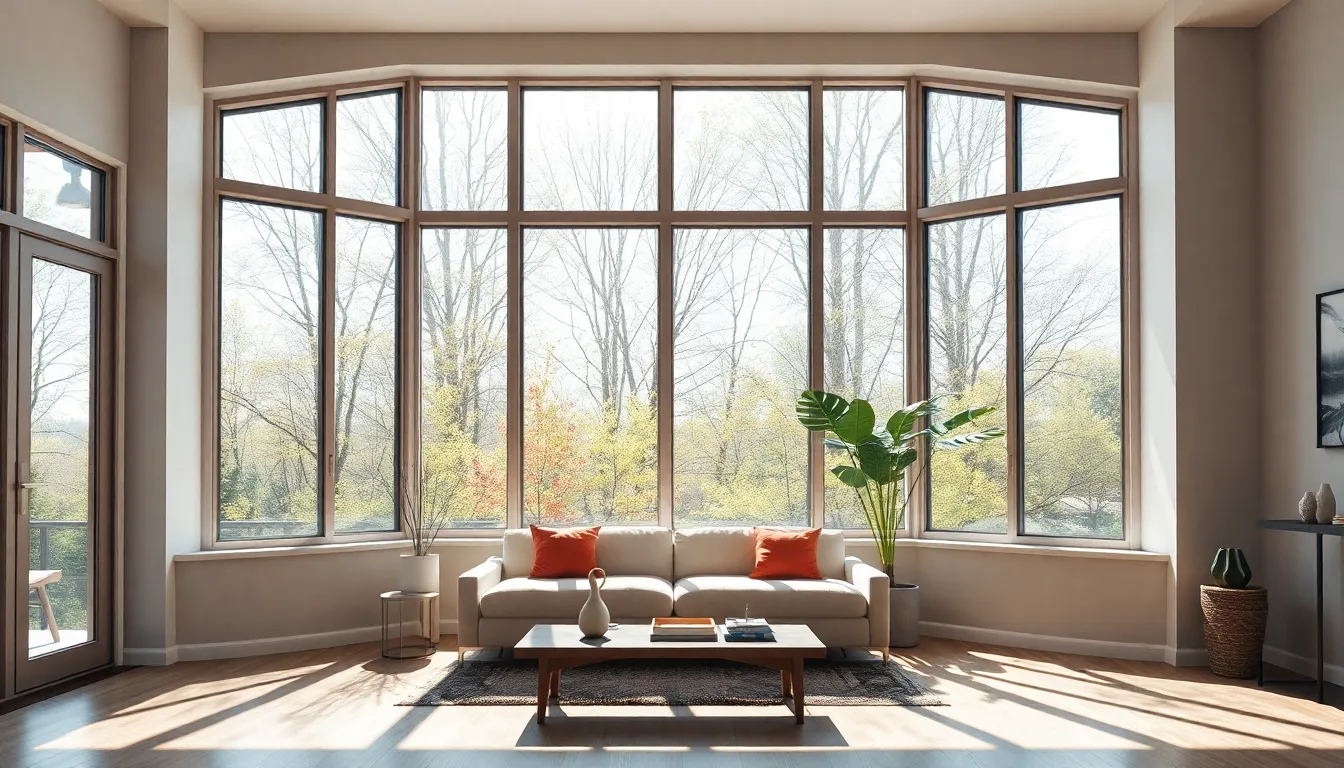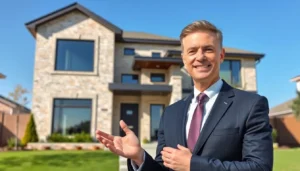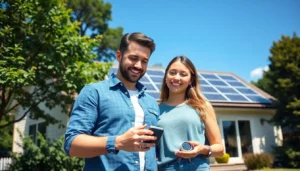Table of Contents
ToggleWhen it comes to windows, most people think of a simple pane of glass. But low-E glass windows are like the superhero of home energy efficiency. With a special coating that reflects heat while letting in natural light, they keep homes cozy in winter and cool in summer. Who wouldn’t want a window that works harder than their teenager during exam season?
Imagine slashing those energy bills while enjoying a bright and comfortable living space. Low-E glass windows not only enhance your home’s aesthetics but also boost its value. They’re the perfect blend of style and functionality, proving that energy efficiency can be both smart and chic. So, if you’re ready to upgrade your home and give Mother Nature a high-five, low-E glass windows just might be your new best friend.
Overview of Low-E Glass Windows
Low-E glass windows feature a specialized coating designed to optimize thermal performance. This coating reflects infrared light, minimizing heat transfer into and out of a home. Homeowners benefit significantly from reduced energy bills due to enhanced insulation. As a result, maintaining comfortable indoor temperatures becomes easier throughout the different seasons.
Natural light still enters through low-E glass windows, making spaces feel bright and inviting. The coating allows visible light to pass while blocking harmful ultraviolet rays that can fade furniture and fabrics. Many homeowners find the aesthetic appeal of low-E glass an additional advantage, allowing for stylish designs without sacrificing energy efficiency.
Various types of low-E coatings exist. Hard coatings work effectively in warmer climates and provide durability, while soft coatings offer superior performance in colder regions. Price points for low-E glass windows differ based on the type and manufacturer. Despite potentially higher initial costs, long-term savings on energy bills often outweigh these expenses.
A range of options is available, catering to different preferences and home styles. Home improvement projects can include low-E glass windows, replacing older models with energy-efficient versions. Research supports that installing these windows can increase property value and attract prospective buyers.
Selecting low-E glass signifies a commitment to sustainability and energy efficiency. Many manufacturers provide warranties ensuring durability, giving homeowners peace of mind. With such numerous benefits, low-E glass windows present a smart investment for any home.
Benefits of Low-E Glass Windows
Low-E glass windows offer numerous advantages for homeowners, particularly in energy efficiency and UV protection. These windows represent a smart choice for enhancing home comfort and longevity of interior items.
Energy Efficiency
Energy efficiency stands out as one of the primary benefits of low-E glass windows. The special coating reflects heat while allowing natural light to enter, which reduces the need for heating and cooling systems to work as hard. Studies indicate that homeowners can save up to 30% on energy bills by upgrading to low-E glass windows. Seasonal temperature regulation improves significantly, leading to a more comfortable living environment year-round. In addition, lower energy consumption contributes to reduced environmental impact, making low-E windows a sustainable choice for modern homes.
UV Protection
UV protection is another significant advantage of low-E glass windows. This specialized coating blocks up to 99% of harmful ultraviolet rays, which can cause fading and deterioration of furniture, flooring, and artwork. It’s essential to protect interior spaces from sun damage, and low-E glass effectively minimizes this harmful exposure. Homeowners can enjoy sunlit rooms without the worry of damage to their belongings. By choosing low-E glass, they invest in both comfort and preservation, making it a thoughtful option for any living space.
Types of Low-E Glass Windows
Low-E glass windows come in various types, catering to different climate needs and energy efficiency goals. Understanding these options helps homeowners make informed choices.
Hard-Coated Low-E Glass
Hard-coated low-E glass contains a durable layer of metallic oxide that reflects solar heat. This type performs effectively in warmer climates, keeping interiors cool during hot weather. Its resilience allows for easy cleaning and long-term use without degrading. Homeowners appreciate this option for its cost-effectiveness, as it typically costs less compared to soft-coated alternatives. While hard coatings may not provide as much insulation in colder regions, they still offer significant energy savings and durability.
Soft-Coated Low-E Glass
Soft-coated low-E glass involves a more advanced coating technique, resulting in superior insulation properties. This option reflects heat back into a room, making it ideal for colder climates. It features a thinner metallic layer that optimizes light transmission, enhancing visible light while blocking harmful UV rays. Homeowners often select soft-coated glass for improved energy efficiency and comfort. Though it may carry a higher initial cost, the benefits in energy savings often justify the investment. Manufacturers frequently provide extended warranties, further reinforcing its value for residential applications.
Installation Considerations
Installing low-E glass windows requires careful planning. Homeowners must consider several key factors to ensure a successful installation.
Cost Factors
Costs vary significantly based on window size, type, and installation complexity. The average price for low-E glass windows ranges from $300 to $600 per unit. Additional costs may include labor fees, ranging from $50 to $100 per hour for professional installation. Materials for framing or any necessary adjustments can increase expenses. Budgeting for these factors ensures a clear understanding of total project costs. Choosing low-E glass can lead to energy savings, potentially offsetting higher initial investments over time.
Professional Installation vs. DIY
Professional installation offers numerous benefits, including expertise and efficiency. Contractors are familiar with local building codes and regulations, ensuring compliance with necessary standards. While this route can incur additional costs, it often leads to a smoother installation process. DIY installation may save money upfront but comes with risks, such as improper sealing leading to air leaks. Homeowners comfortable with basic construction skills can consider this option but should account for potential mistakes. Before deciding, assessing individual capabilities and comparing cost implications helps in making an informed choice.
Common Myths About Low-E Glass Windows
Low-E glass windows are often misunderstood. Many people believe they block all natural light, when in fact, they allow significant visible light to pass through. Contrary to popular thought, these windows do not make homes too hot during summer; they effectively reflect infrared light, maintaining a comfortable indoor temperature.
Another myth suggests that low-E coatings are too costly. While the initial investment may seem higher, energy savings can offset this cost, with homeowners saving up to 30% on their energy bills. Some assume that low-E glass is only suitable for new constructions, but they can fit into existing window frames during renovations as well.
Another misconception is that low-E glass windows require special maintenance. Routine cleaning with mild soap and water suffices; no additional upkeep is necessary. People often think that low-E coatings are only useful in cold climates. In reality, hard coatings perform well in warmer areas, helping to keep homes cool.
It’s an assumption that all low-E coatings provide the same benefits. Soft coatings offer superior insulation and light transmission, which might justify their higher upfront costs in specific climates. Some believe these windows will impair aesthetics. Yet, low-E glass is available in various styles, enhancing home appearance.
Finally, a common belief is that installation requires extensive changes to a home. Proper installation can occur with minimal modifications, ensuring compatibility with existing structures. Addressing these myths helps clarify the advantages of low-E glass windows, empowering homeowners in their decision-making.
Conclusion
Low-E glass windows stand out as a smart investment for homeowners aiming to boost energy efficiency and enhance comfort. With their ability to reflect heat while allowing natural light, these windows not only lower energy bills but also protect interiors from harmful UV rays.
The variety of low-E coatings available ensures that there’s an option suitable for every climate and aesthetic preference. While the initial cost may be higher, the long-term savings and added value to a property make them a worthwhile choice.
By choosing low-E glass windows, homeowners demonstrate a commitment to sustainability and improved living conditions, making their homes more inviting and energy-efficient for years to come.






